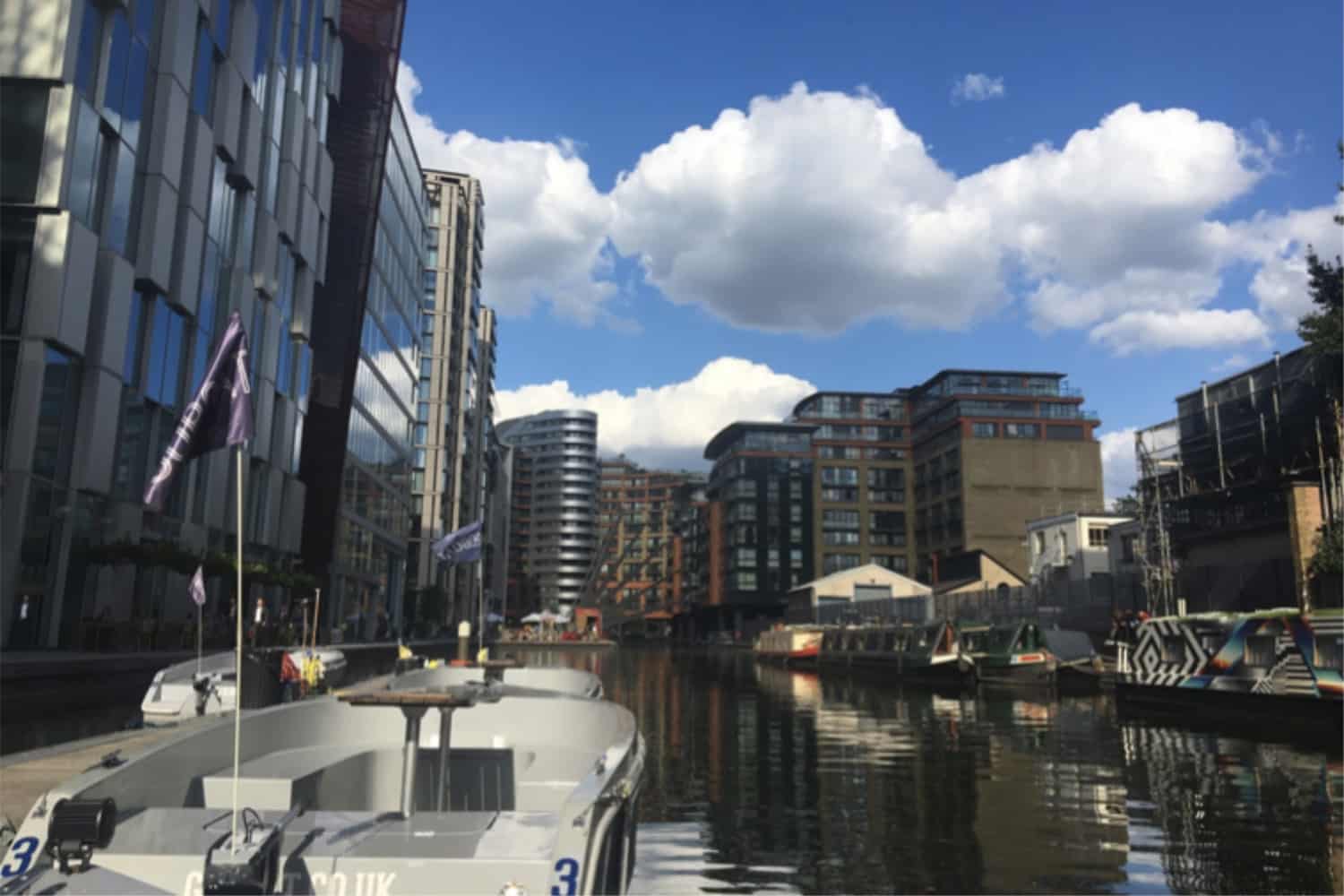Paddington water works site study
SUCCESSFULLY DELIVERING CHANGE

We believe that the best solutions are yet to be discovered and the best outcomes yet to be delivered. That is why we prepare organisations for change and help them implement it. We do this through an intimate understanding of their business, a relentless focus on delivery, the use of techniques that challenge the status quo and bridge traditional disciplines. We provide a range of services to public and private organisations including project and programme management, property consultancy, change management and strategy development and strategic advice. Contact us to discuss a project.
In May, one of our graduates joined the Future of London in a site study of Paddington Basin. Out of this site study, So Sum Lee learned how to better manage different uses around the water and ensure sustainable growth around waterways.
See the end of the article to learn more about how we’re investing in future leaders as part of the Inner Circle Consulting Graduate Programme.
Graduate Report from the Field: Paddington Water Works Site
Attitudes toward city waterways have been changing dramatically over the past 10-15 years, from being used for trade and industry-related to being viewed as assets that are attractive and capable of supporting wellbeing and biodiversity, a number of regeneration schemes across the world now embrace waterways in their development plans. Waterway-adjacent housing and office design increasingly incorporate and reflect canals by front-facing buildings.
This is a substantial change when, as recently as the 1990s, such canals would have been rear-facing and dismissed as unattractive spaces. Alongside a growing design appreciation, there is an increasing recognition that waterways are a good way to promote urban mobility as they are often away from the main roads and the towpaths are safe to walk and cycling along.
However, access to waterways and waterway-based development has not come without its challenges; Fragmented ownership and poor accessibility have made it challenging to animate these waterways.
Challenges of fragmented ownership and management
Paddington was designated an Opportunity Area in 1988, encouraging and targeting the area for employment growth and high-rise development. Over the past 30 years, Paddington has transformed into a lively area with over 2.2 million sq ft of prime office space and accommodating more than 100 new companies centered along the reborn Grand Union Canal. Despite this new vision and thriving development activity, several of the area schemes are disconnected and lack cohesion due to the vast number of stakeholders and the complex geography.
Fragmented ownership and management of waterways have made it difficult for governance. Over 1,900 individual planning applications have been submitted for the Paddington Opportunity Area since 1988. With nine projects currently on site and nine projects consented/subjected to further applications, ownership of Paddington is highly fragmented.
This has resulted in multiple issues of management of the waterway and puts further development at risk.
Navigating complex geographies
The geography and street layouts have imposed challenges to accessibility and way-finding. This contributes to the area feeling disconnected or disparate.
These challenges include:
· Paddington National Rail and Underground stations, situated at the centre of the Opportunity Area, cuts through the site and is difficult to navigate around
· The surrounding highway and road layout has made user experience and pedestrian way-finding difficult. For example, some people, who live a 10-15 minute walk away from the canal, seldom get to the canal or don’t even know it exists as it can be hidden by the station. Weak permeability and poor information make the pedestrian journey more complicated.
· Poor way-finding has exacerbated the challenges and must first be tackled before promoting the waterway as a space and building up placemaking
Partnership to tackle severance
The Paddington Partnership was established to address the issues of fragmented ownership. Multiple landowners, development schemes, funding bodies and local communities were connected to bring a shared sense of place to life. The Paddington Partnership worked together to improve the public realm to create a destination that attracted people to the area. With four new bridges and 1,000 metres of new towpaths, residents, workers and visitors can more easily navigate, and get to, previously inaccessible routes.
The Partnership successfully created a case for leisure-use in Paddington that has animated the waterway and brought people to the area whilst making the Paddington area a great place to live, to work and to play.
Promoting mixed-uses
Flexibility and diversity of the uses along the canal are elements that have made Paddington thrive. Ranging from offices, restaurants, retailers, cafés, boat rentals, classrooms and a property marketing suite, the area features many functions and activities that bring people to the waterway.
The Paddington Partnership has facilitated mixed-use operators by curating individual retailers and restaurants on site to make the area more unique, vibrant, and diverse.

Two Key Lessons for Senior Leaders in Regeneration
1. Addressing way-finding issues are crucial to activate your waterways. Complicated road layout, inconsistent numbering and naming of exits have always made it difficult to reach the waterways. In this case study, Paddington Partnership worked closely with Network Rail to improve the signage and created a station canal side exit. An exit directly bringing visitors to the canal has made a huge difference on accessibility and their movement. Road signage has also been implemented along the canal to improve pedestrians’ journey. With clear road signage and better accessibility to the waterways, pedestrians can find it much easier and enjoy the waterways.
2. The benefits of local waterways cannot be maximised without addressing the potential challenges on fragmented ownership. The boundaries of ownership along the waterways are usually unclear. Thus, working with multiple stakeholders is key to deliver successful waterside development. Partnership is beneficial, bringing landowners, development schemes, local communities and interest groups together not only for the site as a whole but also for the individual schemes. A coherent approach on placemaking can create a space with local characters that is more attractive and unique. In this case study, the Paddington Partnership was formed to address the issue. One of the partnership members, British Land, noted that “Investing in public realm is as important as investing in physical building blocks as they can create a sense of destination which attract people to the area.” Paddington Partnership is also actively working with the Canal and River Trust to develop and deliver the walking and cycling provision near the canal. Collaboration with interest groups can ensure diverse demands are better managed and encourage sustainable growth around the waterways.
Paddington Partnership’s approach to addressing challenges by investing in public realm, diversifying the retail and commercial offer around the waterway, and working closely with various stakeholders provide a good case study for sustainable growth around waterways. If you’d like to learn more about how we can help you achieve insight and learning from regeneration projects across the UK, please feel free to get in touch with us.
The Inner Circle Consulting Graduate Programme
We believe that the best solutions are yet to be discovered and the best outcomes yet to be delivered. That is why we prepare organisations for change and help them implement it. Our ICC Graduate Programme works with the future leaders of tomorrow’s build environment sector to develop hands-on delivery skills alongside robust project management learning. If you’d like to learn more about our Graduate Programme, contact us to learn more about how we can help you achieve your career goals and learning.


